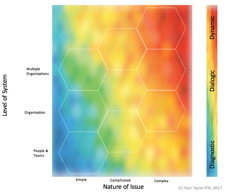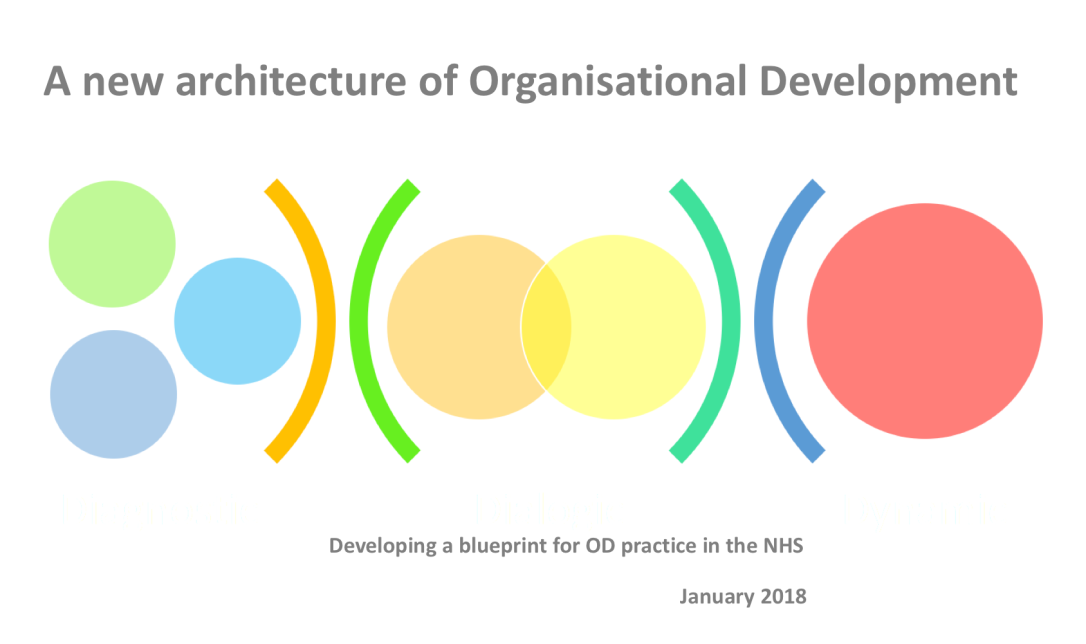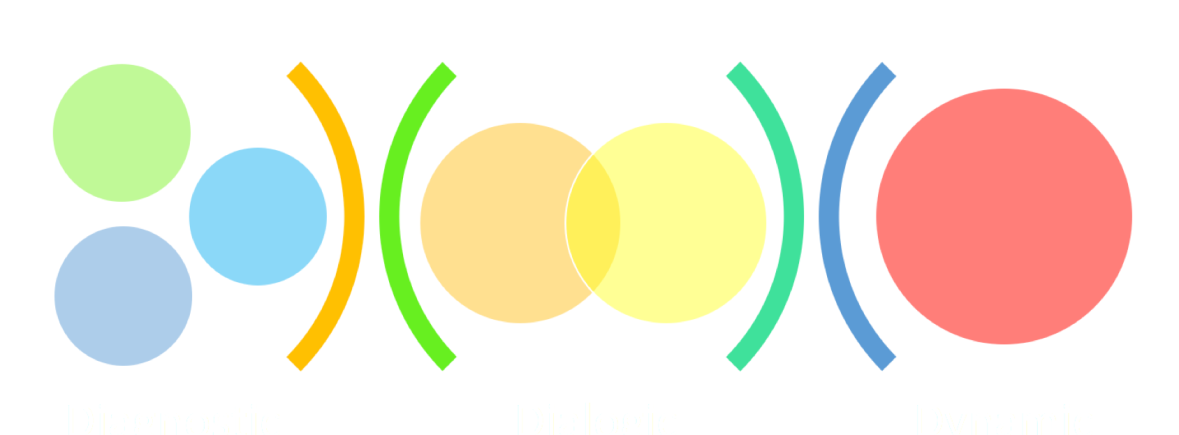The world never stops changing. Societies evolve and adapt with time. Within and across our societies, organisations shift and shape how we live our lives both at work and home. Organisations are not separate from society; they are part of it. Organisations are society’s heartbeat. Over time, the construct of organisations has changed significantly and this is particularly evident in our National Health Service (NHS).
The NHS has an enduring record of delivering quality care to the population, free at the point of delivery and available to everyone. When the NHS was founded in 1948 it was in the post-war era where life expectancy sat at 66 for men and 71 for women. Seventy years later, significant changes in the populations we serve, where people are living for longer with complex long term conditions are driving change in the NHS necessary to meet current and new demands. Existing models of care are not sustainable for the future and therefore new forms of organising are being created and tested, crossing organisational boundaries and bringing partners together in new ways. The NHS, which historically was driven by a medical model of care where specialist experts diagnosed, treated and fixed health problems has important work to do in the 21st century to become a service focused on prevention, health promotion and self-care alongside more traditional methods of delivery.
Organisational Development (OD) practitioners enable people to transform systems. The practice of OD has a rich and successful history in the NHS. However, practitioners have expressed frustration at the often transactional nature of OD work when we know that more transformational interventions are needed. OD is predominantly practiced in individual organisations with an internal focus. New models of OD may be necessary when working across Organisational boundaries and stepping into a significantly more complex space. These new models of OD will require investigation and testing by practitioners working across the NHS, shaping new futures for our work.
In the early 2000s, the field of OD was at a crossroads in its own development as a practice. With almost five decades of history and foundation to build on, new ways of understanding organisations and the ever increasing pace of change began to expose some limitations in classical, diagnostic, approaches to OD. Bushe and Marshak’s work on Dialogic OD established a new pathway for the profession and remains a vital aspect of OD practice. Diagnostic and Dialogic OD are both valid and important ways of thinking and working in the OD space. They have given practitioners decades of success, learning and change-making. While our field has been evolving, the world of work has experience seismic shifts that the founding figures of OD could not have predicted. Organisations and the nature of our relationships to and with them have changed in fundamental ways. In the NHS, working across, between and within organisational boundaries will become the new normal for OD practitioners. This will require new approaches and models to guide our practice that may go beyond existing concepts of OD. Establishing the current position of OD practice in the NHS and the conditions that shape it was the starting point for the Bootstrappers Action Research project.
We began by critically assessing current models of OD practice in our organisations and beyond. We looked at what brought us to OD and how we are practicing in the system. We explored how our OD practice has changed over time and identified how aspects of OD may need to be strengthened or amended to work across multiple organisational boundaries. Our initial findings revealed much about our identities, visibility, activity and professional development. We noted that inquiring into OD practice felt like emerging deeper into the fog. The more we saw, the foggier it got. Part of our learning was to be more comfortable in the fog and discover new ways of navigating in it. We had run out of map.
We ventured that the uncertain and unknown path ahead would demand a new architecture of OD that goes beyond diagnostic and dialogic approaches. Building on our rich history of theory and practice, we have begun to create our own new model of practice that will support new models of care delivery. This new OD architecture will be created as we build it. There are no answers hidden, awaiting discovery. We may not even know the questions that need to be asked. What we do know is that the space beyond dialogic OD is even more emergent. Beyond the boundaries of our known practice lies opportunities to work in new, different ways while staying connected to the roots of our practice. OD in this unexplored territory is spontaneous, avant-garde and grounded in the dynamic now. It will require a pioneering spirit to break new ground and occupy this territory.
Our new architecture of OD adds a third category, Dynamic OD, to the existing canon of our practice.

Here we go beyond the existing boundaries of OD theory into a new space where practice is improvisational, relational and spontaneous. We need to be prepared to acknowledge that in the Dynamic OD space, our trusted diagnostic and dialogic methods may not give the desired results. A comprehensive understanding of systems and complexity theories are needed beyond the use of tools and techniques. Power and politics at a macro level are key issues to engage with. An advanced, confident approach is needed in order to work with the constant change coming from the forces producing motion between and within organisations. Practitioners in the dynamic space will need to invent new ideas and approach them with energy and experimentation.

We have created a new blueprint for OD practice that can be used as a tool for reflection, sensemaking and action. The blueprint helps users to establish the most efficacious methods and mindsets in a range of contexts by mapping existing and planned OD activity in order to assess and reflect on the best possible approaches to achieve successful outcomes.

An explanation of the blueprint and a step by step process of how to use it is included in our downloadable document ‘A New Architecture of OD’. The blueprint model, research and thinking was first introduced to our NHS OD community at the OD in the NHS Conference in 2017 where participants tested the model in real time. You can download our conference presentation here. This was followed by ‘beta testing’ with a small group of practitioners who used the blueprint for real. Feedback from this process included:
- “Deepening thinking and examining our own challenges”
- “Spending time focusing…has helped me devise better interventions”
- “Getting into root factors took me in interesting directions.”
- “Complicated, but reflected real nature of the issue”
- “The impact could be profound if it gives us insights and a map”
- “It was quite testing…really forced you to think about things”
The testing process helped people to reflect on their practice and undertake a deeper level of thinking about their OD work. It revealed data, issues and insights that hadn’t previously been considered. It generated energy and was seen as useful. It was noted that the tool could be used alone, in teams and in group settings. It could be helpful to use with clients. It was seen as valuable, and with potential to improve patient care. It was also noted however that an investment of time is needed to fully explore the tool, and this was off putting to some. We appreciate that this is the case and would encourage users to give themselves the gift of time and invest time in order to harvest good results that may save time in the future.
We are happy to make this phase of our work available to a wider audience as we continue our research journey. Once you have downloaded and used the tool, please take a moment to give feedback so that we can continue to refine and shape this emerging new architecture of OD.
Download A new architecture of Organisational Development (2018)
Paul Taylor-Pitt
On behalf of OD Bootstrappers

